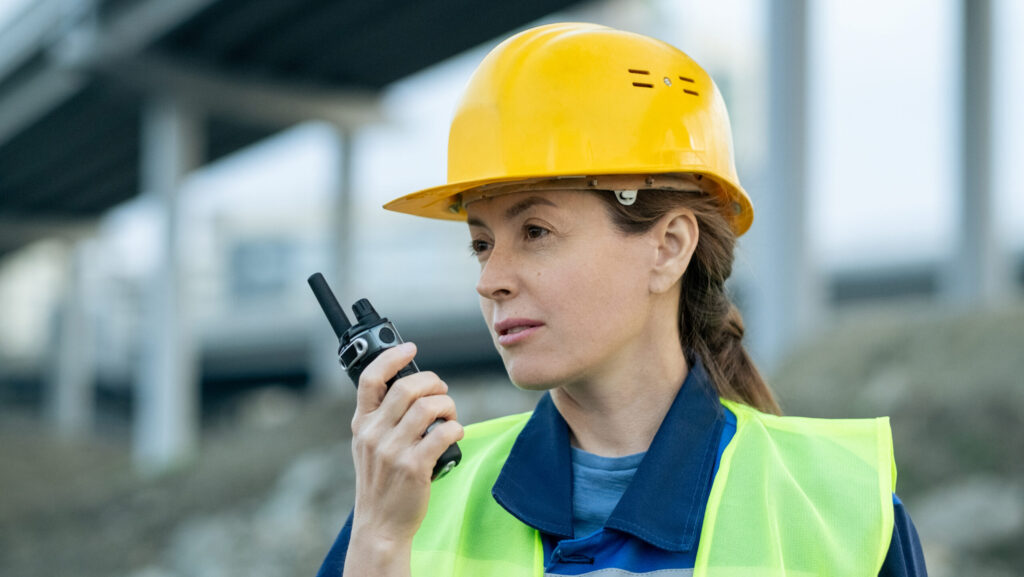We had the pleasure of speaking with Stephen Frost, CSP, CSM, MBA, about the most effective ways to implement a successful behavior-based safety program. In this interview, Stephen shares valuable tips for those looking to start a new program or enhance an existing one.
About Stephen Frost
Stephen Frost is the Assistant Director at the University of South Florida’s (USF) OSHA Training Institute Education Center.
His career began in the Air Force, where he served as a Fire Protection Specialist. He then became a Medical Journeyman, responding to all types of incidents and injuries. During this time, he developed a curiosity about the driving force behind these incidents: how they could happen and how they could be prevented.
After earning a degree in Health Science, Education, and Safety from the University of Florida, he began his formal EHS career at a biotech company, where he worked diligently to learn as much as possible from books, mentors, and National Safety Council classes. Since then, he’s worked in all types of industries, from power and chemical plants to surface mines, manufacturing, paper mills, and construction.
Today, in addition to his role at USF, he serves as a public representative for NACOSH, the National Advisory Committee on Safety and Health.

Behavior Based Safety Program Management
Stephen first encountered the concept of behavior-based safety (BBS) in Scott Geller’s book, “The Psychology of Safety: How to Improve Behaviors and Attitudes on the Job.” He even had the opportunity to see Scott Geller speak at an in-person event.
What he learned was that “people are what matters most,” and he made it his mission to ensure that his frontline teams always understand the importance of safety.
1. What are the main initiatives you’d recommend people start with when they’re either implementing or overhauling their BBS program?
The first step is to familiarize yourself with both the people and the work they do. This is crucial because successful BBS programs depend on gaining buy-in from employees. To achieve this buy-in, building trust is essential. From my experience, the most effective way to earn that trust is to gain a thorough understanding of the work at hand.
For me, this often involves immersing myself in the process whenever possible, allowing me to grasp the challenges my team faces. Demonstrating a willingness to engage in the work makes it significantly easier to coach individuals during behavior observations.
2. In your experience, what are the top objections you might face to a behavior-based safety program?
In my experience, I have received the most resistance from middle managers and line supervisors. This is likely because they face pressure to perform from upper management while also feeling the need to satisfy their teams and ensure everything is done correctly. As a result, they can feel squeezed and overwhelmed when tasked with implementing new programs and initiatives.
Getting these managers on board is crucial because it can lead to significant progress for the BBS program. The primary objections I encounter are that the program seems like just another “flavor of the month” or that it adds to their paperwork burden.
My advice is to clearly explain the benefits of a successful program. When a program is effective, it allows teams to self-monitor and address safety hazards independently. This not only helps prevent incidents but can also improve overall efficiency. Furthermore, when workers feel protected and engaged, they are more likely to participate in other initiatives within the company.
3. In your opinion, what are the metrics (qualitative or quantitative) that companies should use to measure the success of their BBS programs?
It shouldn’t come as a surprise that injury rates and other lagging indicators are the least effective metrics to target, especially in a behavior-based safety (BBS) program. Instead, it’s essential to pay close attention to the observations you record each month and to highlight positive events.
I like to track the total number of observations made and the types of behaviors being observed. For instance, if my team made 50 observations last month, I would want to know how many of those observations identified at-risk behaviors versus safe behaviors.
The metrics for a BBS program can vary depending on the size of the company and the nature of the work being performed. My top recommendations for tracking these metrics include:
- How many audits did each department conduct?
- What was the breakdown of positive versus negative observations?
- How many training modules did employees complete?
- How many near misses did employees report?
- What were the attendance rates for safety training sessions, toolbox talks, etc.?
While I still consider metrics like Total Recordable Incident Rate (TRIR), it is crucial to focus more on leading indicators that foster a proactive safety culture. Additionally, tracking the results of safety perception surveys can provide valuable qualitative data on whether employees take the BBS program seriously and whether leaders are implementing the necessary steps for success.
4. What are the key things you need to do when you’re rolling out a program?
To successfully implement a Behavior-Based Safety (BBS) program, it’s essential to secure support from senior leadership. A genuine BBS program shifts the focus away from placing blame. Instead, it emphasizes the responsibility of managers to create a safe working environment.
Another critical component is effective training. As an EHS professional, you must educate your frontline workers on how to conduct safety observations. This training is crucial for fostering an environment where workers can coach each other over time. SafeStart and DuPont offer reputable training programs that you may want to consider.
Ultimately, the individual conducting the observations is the one who benefits the most from this process. It’s not the person being observed. Therefore, teaching your workforce how to observe one another and communicate effectively is the best way to enhance learning and prevent incidents.
5. What type of incentive-based initiatives are effective within a behavior-based safety program (if any)?
I have noticed that many safety professionals make a common mistake: they reward employees for not reporting incidents. This typically happens when organizations incentivize metrics like “days without injury,” which can discourage individuals from reporting issues they observe.
Instead, you should focus on encouraging employees to report potential hazards. One effective approach is to implement a point system that rewards employees for notifying the safety team about safety risks. You can offer small rewards, such as food or gift cards, but I particularly like the idea of unique rewards, like a “dinner with the boss.” This approach not only promotes a safer work environment but also promotes open communication about safety concerns.
6. What’s the number one sign that your BBS program is effective?
You will know your program is successful when frontline workers start coaching each other on safety behaviors. Over time, with proper training and the development of habits, they should learn how to effectively audit and communicate with one another. If implemented correctly, your workers will be able to manage their own safety.
I’ve experienced the situation of working myself out of a job three times in the past due to this behavioral shift. Once employees began to monitor themselves and uphold safety procedures independently, the need for daily EHS management was reduced significantly. It’s a strange yet rewarding feeling when employees take responsibility for the safety and health of everyone in the company.
7. What has been the proudest moment in your career, implementing behavior-based safety programs?
In 2009, I oversaw a team of about 35 millwrights at a facility in Tennessee that had never had a safety program in place before. When a corporation took over, they brought me in to implement one.
I started by getting to know all the workers to understand their roles and learn about them as individuals. When I began implementing the EHS program, I faced significant resistance. Safety rules had never been enforced before, which made my task challenging. I focused primarily on the fundamentals of safety, reminding everyone to wear safety glasses and follow basic safety rules and training.
Over time, the workers began to accept my reminders without questioning them. I emphasized the importance of wearing proper personal protective equipment (PPE) and inspecting equipment regularly.
About six months into my role, one of the workers came into my office and said, “You saved my sight this weekend.” I asked him how, and he explained that while working on a project, he had put on his safety glasses. A shard from the material flew towards his eyes, but embedded into the glasses, preventing him from getting injured. He thanked me for introducing that subconscious safety behavior, which led him to make the right choice without thinking about it.
As a professional in safety, it’s always rewarding to hear stories like this. Although we don’t always receive validation that our program has prevented incidents, when we do, it feels truly rewarding.
How Stephen Stays Informed
We couldn’t let Stephen go without getting his top resources for staying informed and engaged in the EHS field. Read his recommendations below!
EHS Professional Development
For professional development, I highly recommend the USF OSHA Training Institute. While I may be biased, it’s an excellent program that offers valuable knowledge for health and safety professionals.
Of course, I’d also highly recommend organizations like the NSC, BCSP, and ASSP. I believe that networking and sharing information are essential for professional growth, and it has been one of the best ways for me to expand my knowledge in my career.
Best Advice for Fellow Safety Pros
The best advice I ever received in health and safety is that “it’s about the people, not the paper.” Understand that even the best plans can fail at times. Learn from those experiences and look for ways to improve based on your insights. What truly matters is your adaptability and your continued effort to keep your team informed and safe.




